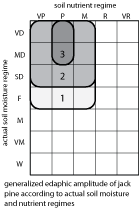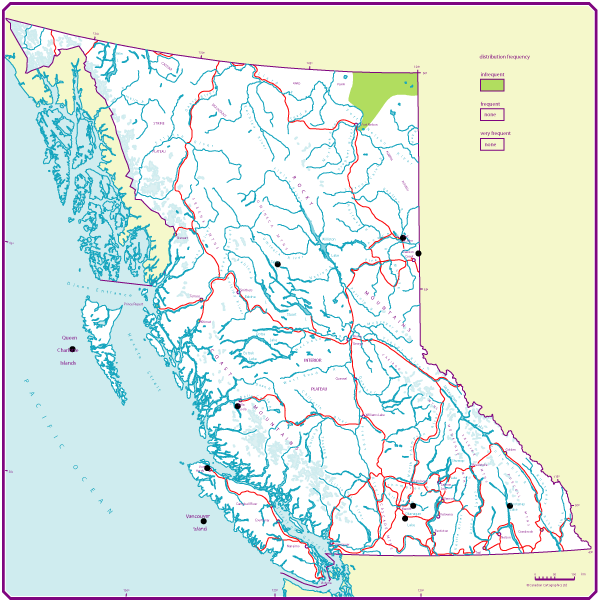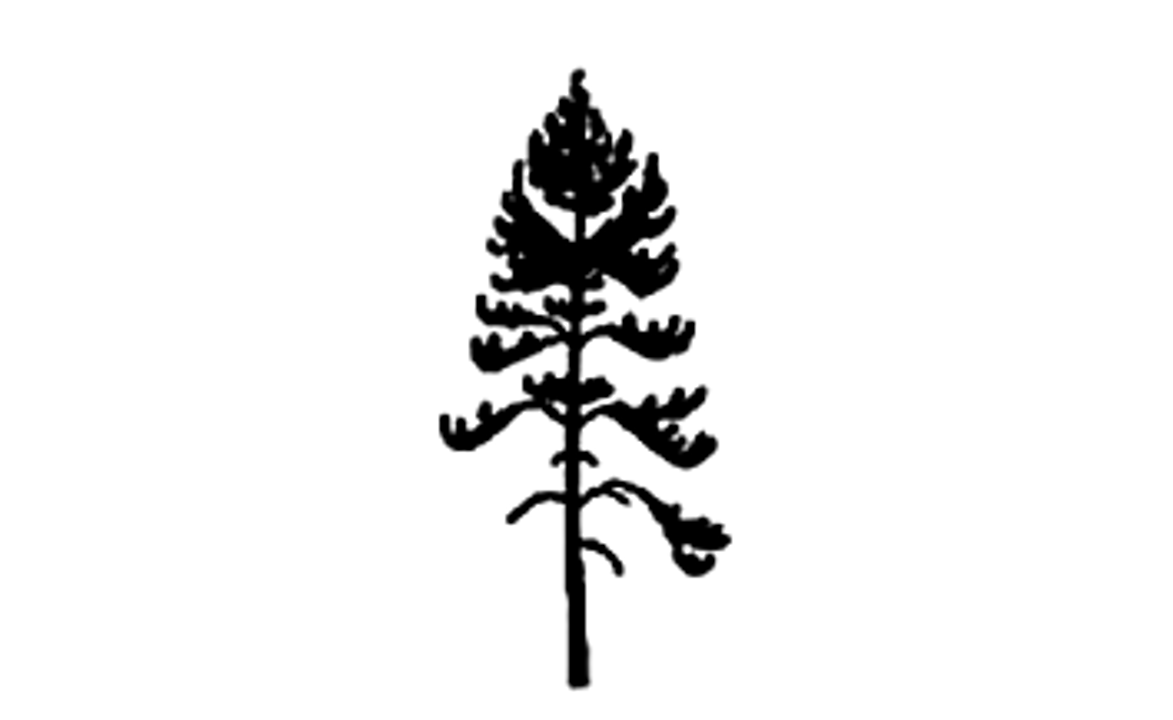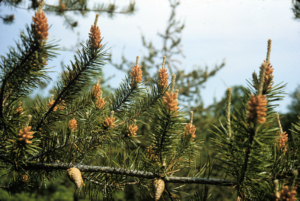Jack pine
On this page
- Geographic range and ecological amplitudes
- Tolerances and Damaging Agents
- Silvical Characteristics
- Genetics and Notes
Geographic range and ecological amplitudes
Description
Jack pine is a small- to medium-sized (rarely >30m tall), evergreen, boreal conifer, with a sparse, variable crown and spreading branches at maturity. It is the most widely distributed pine species in Canada, and an important timber species for pulp and lumber in central and eastern Canada.
Geographic range
Geographic element:
Eastern North American/mainly Central and Atlantic and marginally Cordilleran
Distribution in Western North America:
(north) and central in the Cordilleran region
Ecological amplitudes
Climatic amplitude:
subarctic - montane boreal - cool temperate
Orographic amplitude:
montane
Occurrence in biogeoclimatic zones:
(northeastern BWBS)
Edaphic amplitude

Range of soil moisture regimes:
very dry - moderately dry - slightly dry - (fresh)
Range of soil nutrient regimes:
very poor - poor - medium; psammophyte, oxylophyte
Jack pine grows best on acid soils, typically in high quartz-sands where calcium and magnesium are supplied in very small quantities; thus, it could be considered a psammophyte and oxylophyte. Jack pine does not grow on alkaline soils and grows poorly on calcium-rich soils. In contrast to lodgepole pine, jack pine does not grow in acid bogs.
Tolerances and damaging agents
Root system characteristics
Jack pine develops a taproot as a seedling and maintains it to maturity. In deep, well-drained soils the roots may penetrate below 270cm. The bulk of the roots consist of laterals confined largely to the upper 46cm of the soil. Roots of jack pine are associated with both ecto- and endo-mycorrhizae.
| Tolerance to | Tolerance class | Comments |
|---|---|---|
| low light | L | partial shade may be beneficial in the establishment period |
| frost | H | frequent in subarctic climates |
| heat | H | frequent on insolated sites |
| water deficit | H | tolerates severely water-deficient sites |
| water surplus | L | absent on waterlogged sites; may tolerate a short-term inundation |
| nutrient (mainly N) deficiency | H | very frequent on very poor and poor sites |
| Damaging agent | Resistance class | Comments |
|---|---|---|
| snow | L | low resistance and resilience, results in poor crown form |
| wind | H | firmly rooted |
| Risk class | ||
|---|---|---|
| fire | H | fires are frequent in the northern boreal forest |
| insect | H | jack pine budworm and white pine weevil |
| fungi | M | western gall rust; root and butt rots not a major concern (e.g., red ring rot and Armillaria root disease) |
Associated tree species and successional role
In British Columbia, jack pine grows in even-aged, post-fire forests in pure or mixed-species stands. It is present in early and intermediate stages of secondary succession on fire-disturbed sites.
| Associated tree species |
Occurance class | Major area of occurance |
|---|---|---|
| white spruce (and hybrids) | L | northeastern BWBS |
| black spruce | L | northeastern BWBS |
Genetics and notes
Genetics
The various environments in which jack pine grows over its wide range have provided ample opportunities for differentiation and natural selection. In British Columbia, it hybridizes with lodgepole pine (P. x murraybanksiana Righter and Stockwell).
Notes
Jack pine is one of the least productive North American pines but valuable timber crop species in central and eastern Canada. Rotation periods used for the clearcutting system vary between 40 and 80 years. It was introduced to Europe where its performance was rather disappointing. More detailed silvics information is given by:
Rudolp, T.D. and P.R. Laidly. 1990. Pinus banksiana. Pp. 280-293 in R.M. Burns and B.H. Honkala (technical coordinators) Silvics of North America, Vol. 1. Agri. Handbook 654, USDA For. Serv., Washington, D.C.



